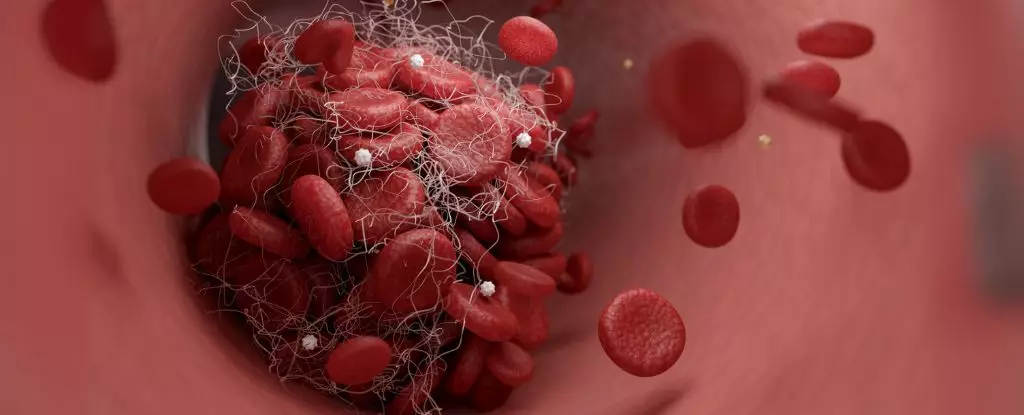As a former nurse in neurocritical care, I had front-row seats to the shattering impacts of stroke on both survivors and their families. The anguish is palpable; a healthy individual can go from thriving to incapacitated in mere moments. This experience drove me to pursue research focused on stroke, revealing a startling truth: the public’s understanding of stroke and its risk factors is woefully inadequate. With strokes standing as a leading cause of death and long-term disability in England, the immediate need for effective prevention strategies cannot be overstated.
When many people think of a stroke, they often associate it with advanced age. However, the increasing incidence of strokes among adults under 55 should shake us awake. It’s a misconception that stroke is merely an “older person’s disease.” Risk factors that were previously deemed relevant only to older populations—such as hypertension, obesity, and sedentary lifestyles—are manifesting in younger demographics. This troubling trend signifies that we cannot afford complacency. By addressing public health education on stroke prevention, we can impact lives before it is too late.
Rethinking Stroke Risk Factors
Several risk factors are undeniably out of our control; these include age, sex, ethnicity, and family medical history. Intriguingly, women disproportionately suffer from strokes, often with harsher consequences. Unique risks such as pregnancy and hormonal contraceptives compound the already complex picture of stroke vulnerability among women. Conversely, younger individuals frequently overlook critical lifestyle choices that can mitigate their risk. Heavy alcohol intake, recreational drug use, and poor dietary habits have become alarmingly common among young adults.
More disturbing, however, is the social aspect of stroke risk. Research shows that socioeconomic status plays a pivotal role in health outcomes. Those in lower-income brackets face a higher risk of stroke, not just due to unhealthy lifestyle choices but also because they often lack access to quality healthcare. Inequalities in health education perpetuate a cycle of risk that can be avoided. Such disparities must prompt a serious examination of how we structured our health systems, and we must demand more equitable access to healthcare resources and education.
Empowering Change: Practical Steps to Reduce Stroke Risk
The fact remains: every individual has the power to take proactive steps against stroke. Prevention doesn’t require vast resources or groundbreaking medical advances—several straightforward lifestyle changes can significantly alter one’s risk profile. Here are eight proven strategies that can decrease the likelihood of a stroke by a staggering 75%:
1. Quit Smoking: The most critical step anyone can take is to stop smoking. Smokers face more than double the risk of stroke compared to non-smokers; nicotine and other harmful chemicals damage blood vessels and promote clot formation.
2. Monitor Blood Pressure: High blood pressure is often dubbed the silent killer, significantly elevating the risk of stroke. Regular screenings and timely lifestyle modifications can help maintain blood pressure at safe levels.
3. Control Cholesterol Levels: High cholesterol, especially when combined with hypertension, dramatically increases stroke risk. Adopting a heart-healthy diet that limits saturated fats and emphasizes whole grains, fruits, and vegetables is essential for managing cholesterol levels.
4. Manage Blood Sugar: Elevated blood glucose levels can lead to vascular damage. Regular physical activity and a balanced diet are critical for keeping blood sugar in check.
5. Maintain a Healthy Weight: Being overweight is a significant predictor of stroke risk. Achieving and maintaining a healthy weight can lead to lower levels of hypertension, diabetes, and cholesterol.
6. Embrace a Mediterranean Diet: This nutrient-rich diet has shown promise in stroke prevention. By focusing on whole foods, healthy fats, and lean proteins, individuals can protect their brain health while enjoying delicious meals.
7. Prioritize Sleep Quality: Inadequate sleep can heighten the risk of high blood pressure. Health experts recommend aiming for 7-9 hours of quality sleep each night, balancing activity during the day with restful nights.
8. Stay Active: Regular exercise, prescribed in moderation, can protect against multiple stroke risk factors. The NHS recommends accumulating at least 150 minutes of moderate exercise weekly, a goal that is both attainable and effective.
The Call to Action
The stark reality is that while strokes can have life-altering consequences, the majority of them can also be prevented. It is crucial that we shift our societal focus towards understanding and mitigating the risks associated with this condition. Public health campaigns must emphasize that stroke risk is not confined to older generations but is a concern that affects everyone. Each of us has the power to take action right now, fostering a healthier future for ourselves and our communities. Let’s advocate for broader awareness on stroke prevention to ensure that lives are saved, and families are spared from unnecessary trauma.

